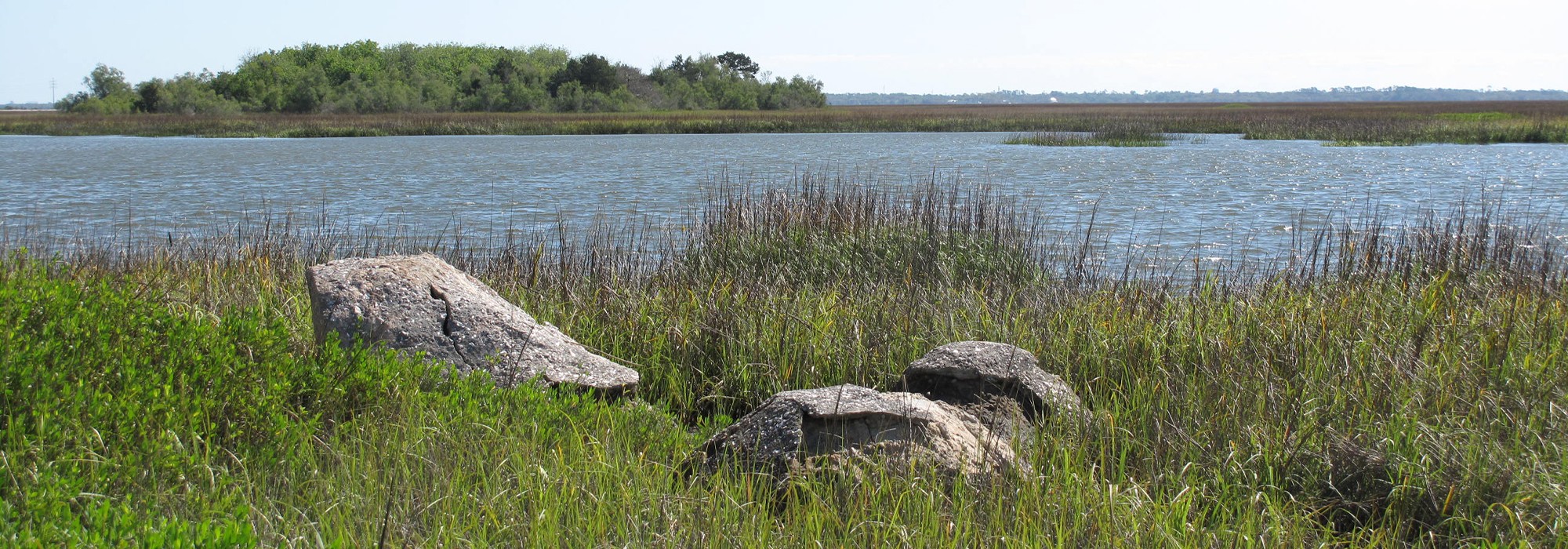This site-specific sculpture by Beverly Buchanan, was built in two days in 1981 by the artist and a local contractor utilizing support from the artist’s Guggenheim Fellowship. The work is situated at the relatively level, western edge of the Marshes of Glynn, a tidal salt marsh, adjacent to Highway 17. The work, located immediately south of Marshes of Glynn Overlook Park, incorporates three, amorphous mounds arranged in a triangular formation. The naturalist forms recall boulders and are composed of concrete and tabby, (a mixture of lime, sand, oyster shells, water, and ash) historically used by African American in the construction of structures and graves markers. The work was conceived as a tongue-in-cheek “roadside attraction,” blending into the landscape without an interpretive marker or signage. Over time, the work has weathered and deteriorated: flaking, cracking, and sinking about a foot into the marsh. Twice a day it is submerged by the tide. While trees in the adjacent park limit northern views, eastern views are unobscured.
The work confronts the marsh’s history and lore as the cultural landscape that inspired confederate soldier and poet Sidney Lanier, to write the poem, Marshes of Glynn, in 1878. The poet is said to have frequented an extant live oak, named in his honor, located less than half-a-mile north of the sculpture. Marsh Ruins also pays homage to Igbo Landing, located along Dunbar Creek on nearby St. Simons Island east of the marsh, where a group of West African (Igbo) people forcibly resisted enslavement and purportedly committed suicide in 1803.












